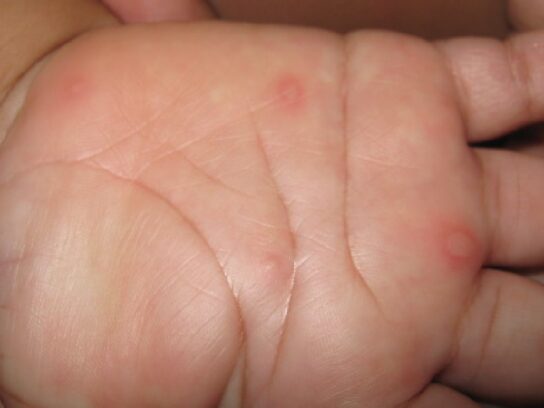
It is a childhood illness that often is not top of mind for many parents. However, when children contract hand, foot, and mouth (HFM) disease they can experience a lot of discomfort. The virus also can cause a lot of angst for families.
It is unclear why, but this summer, several states including Maryland have had an explosion of hand, foot, and mouth cases.
MCM spoke with Dr. Neil Roy, Chief Medical Officer with Adventist Healthcare Shady Grove Medical Center in Rockville. He said the Emergency Room at the hospital has treated a number of HFM patients in recent weeks.
“About three or four years ago, we had a really significant outbreak of it as well. Similar to the flu virus, there can be various strains over different years, different severity, and different infectiousness. This is a year where we are seeing more people with HFM than we did last year over a short period of time,” Roy said.
Highly Contagious Virus
Hand, foot, and mouth disease is highly contagious. Roy said it typically spreads when there are lots of children in close proximity to each other such as in daycare or school settings. The children pass it on to each other.
Signs and Symptoms
The virus has some tell-tale signs and symptoms. It often strikes children five years old or younger; however, anyone can get it, including adults. Oftentimes children will first develop a low grade fever, and then a rash or spots may appear on their hands, feet, and in their mouths. As the disease progresses, the rash can turn into blisters, especially in a child’s mouth or throat. The blisters are not itchy but often are very painful.
“They hurt quite a bit. The reason why HFM can be dangerous is because younger children can get pretty pronounced lesions in their mouth to the point where they are scared to eat or drink. Then they can get really dehydrated, and that’s when the disease can be more serious,” Roy said.
If a blister on a child’s hand or foot opens, then HFM becomes highly contagious. Roy said children also experience more pain when this occurs.
“What’s unique about HFM is a patient can still shed the virus even after an individual has improved. So with most viruses, when you are no longer sick, you are not really that contagious. HFM can continue to shed in a child’s school for four or five days after the symptoms are gone,” Roy added.
The virus also can stay on surfaces longer even after someone is exposed. Roy recommends parents or caregivers wipe down surfaces as much as possible. He says disinfectant wipes can help. Parents also need to clean a child’s toys especially if they often end up in a child’s mouth. He also said handwashing is a key to combatting HFM and may even prevent it from happening in the first place.
Treating the Virus
The typical treatment for HFM is to keep a child comfortable. That can include Tylenol or Ibuprofen for older children. Parents also may want to give their children popsicles or something cool to eat or drink like yogurt or smoothies.
HFM often lasts about a week to 10 days. Roy suggests parents keep their children home from school or daycare if they contract the virus. If a parent learns about an outbreak of HFM in a child’s school or daycare, he or she may want to consider keeping their children home to prevent infection.
Infections Can Happen More Than Once
Unlike some viruses that offer patients longer stretches of immunity after exposure, HFM can infect children more than once. Different strains of the virus can get children and adults sick all over again.
When adults get HFM, they also can suffer painful lesions in their mouth. Blisters also can appear on an adult’s hands, feet, torso, back, or bottom.
When to See a Doctor
While HFM is an uncomfortable disease, most patients will recover well. However, Roy recommends if an older infant stops eating or drinking or stops making wet diapers, then a parent should see a doctor as soon as possible. He said if symptoms persist beyond 10 or 11 days, then parents should take their child to a pediatrician. If a baby, one to two months old develops symptoms, a doctor should see them as well.
Featured photo credit: Grook Da Oger via Wikimedia Commons


Comments are closed.